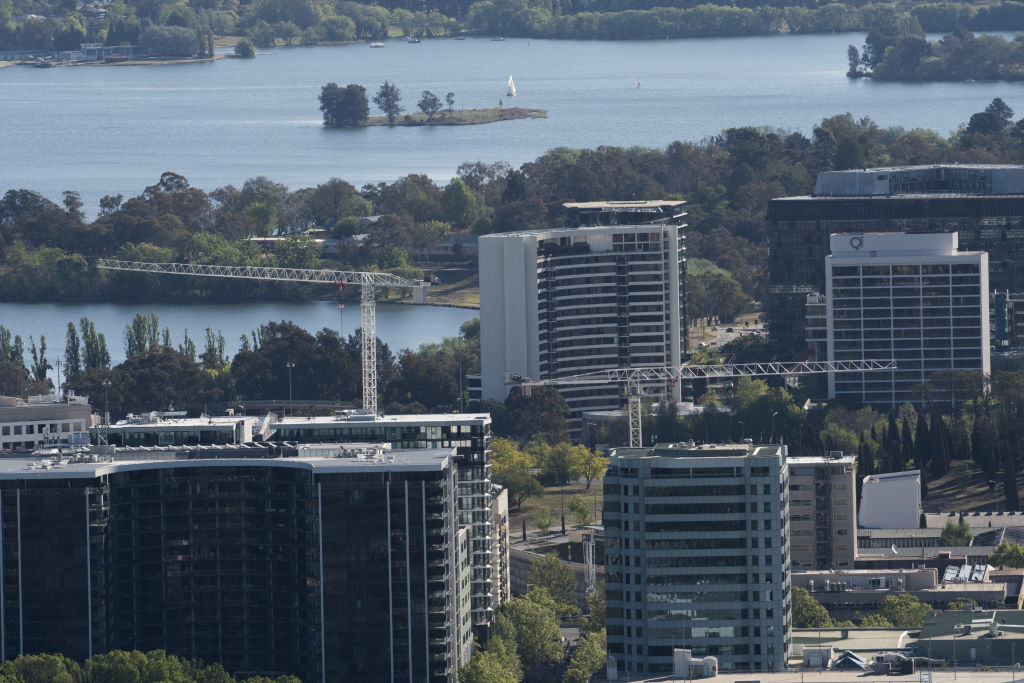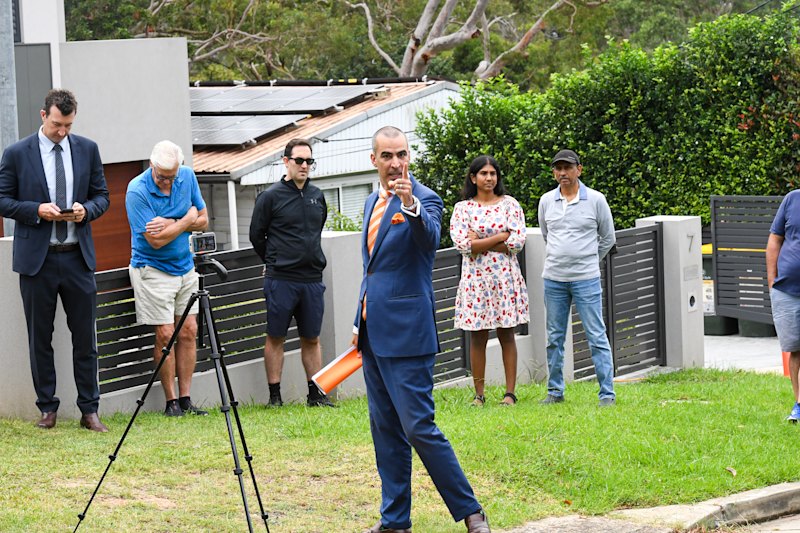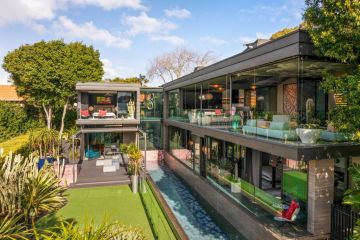Canberra house prices rebound, recording highest quarterly growth of capital cities
Canberra’s housing market appears to have rebounded with new data released today showing the territory’s median recorded the highest increase of the capital cities over the June quarter.
Domain’s quarterly house price report has found that house prices jumped 1.5 per cent in the three months to June 2019. But Canberra’s median house price of $741,947 is 0.1 per cent lower year-on-year, or $699.
The median unit price in Canberra of $448,737 dropped 1.4 per cent over the quarter but is up 1.9 per cent year-on-year, or $8153 higher than June 2018.
Domain economist Trent Wiltshire said a reason for the quarterly bounce for houses was that the time period captured a turning point for the market, with an interest rate cut and regulator softening occurring after the federal election.
“Canberra property prices were soft over the year … in particular, tight lending conditions and election uncertainty weighed on prices, and then what has happened over the past six to eight weeks has potentially signalled a bit of a turnaround in prices,” he said.

Despite the annual growth in unit prices, Mr Wiltshire said construction levels would “keep a lid” on apartment prices, and that attached dwellings had fluctuated between $400,000 and $460,000 since 2010.
“Unit prices haven’t really moved much at all, and I think the key reason prices haven’t increased is because the apartment and construction boom has kept a lid on prices,” he said.
Canberra median house prices
| Region | Median Price | QoQ | YoY |
| Belconnen | $610,000 | 0.83% | 2.52% |
| Greater Queanbeyan | $570,000 | 0.44% | 1.79% |
| Gungahlin | $675,000 | 0.00% | 0.75% |
| Tuggeranong | $590,000 | 0.85% | 3.51% |
| Weston Creek | $710,000 | 1.36% | 6.77% |
| Woden | $850,000 | -2.30% | 1.19% |
| Inner North | $899,000 | -0.66% | -3.33% |
| Inner South | $1,300,000 | 0.00% | 1.17% |
On a district level, Weston Creek had the highest level of annual growth for both houses and units, at 6.7 per cent and 16.5 per cent, respectively. LJ Hooker Weston Creek manager Jane Kusetic said families were driving house prices while investors were driving unit prices.
“Weston Creek is full of young families now that couldn’t afford to buy in the Inner South but were able to afford in Weston Creek,” she said.
“I believe investors are looking at Weston Creek [units] as being an ideal opportunity to have a positive cash flow back to them.”
- Related: House prices in wealthier Canberra suburbs affected most by public housing
- Related: Canberra house rents drop but still the most expensive capital city to rent
- Related: The Canberra suburbs where it’s cheaper to buy a property than rent
The Inner North experienced annual declines in both house and unit prices, down 3.3 per cent and 2.7 per cent, respectively.
“We have seen the steepest decline in the Inner North, and perhaps that’s due to where a lot of apartments have been built and a lot of townhouses and that could be taking off the pressure of detached homes within the area,” Housing Industry Association ACT executive director Greg Weller said.
Canberra median unit prices
| Region | Median Price | QoQ | YoY |
| Belconnen | $410,000 | 1.23% | 1.23% |
| Greater Queanbeyan | $255,000 | -5.56% | -5.56% |
| Gungahlin | $405,000 | 0.00% | -2.41% |
| Tuggeranong | $420,000 | -0.12% | 2.44% |
| Weston Creek | $480,000 | 2.24% | 16.50% |
| Woden | $455,000 | 1.11% | 4.62% |
| Inner North | $452,250 | -2.74% | -2.74% |
| Inner South | $500,000 | 1.01% | 1.01% |
Mr Weller said overall across Canberra, there had been a “reasonable level of supply” that had picked up in the detached housing market.
“In terms of detached homes I think it’s generally a good story in that we’re seeing a fairly stable market,” he said.
“Ideally over much of the next decade, if we can see house price growth in perhaps somewhere less than the annual rate of inflation, that would be positive.
“I think what we want to be looking for in the ACT in terms of the housing marking is low single-digit dwelling price growth which gives some stability to the market.”
Capital city median house prices
| City | June 2019 | QoQ change | YoY change |
| Sydney | $1,032,338 | -0.40% | -9.10% |
| Melbourne | $818,237 | 0.30% | -7.70% |
| Brisbane | $559,167 | -1.40% | -1.80% |
| Adelaide | $540,473 | -0.10% | 1.40% |
| Perth | $528,186 | -2.00% | -5.40% |
| Hobart | $474,423 | 0.70% | 3.90% |
| Canberra | $741,947 | 1.50% | -0.10% |
| Darwin | $502,521 | -2.30% | -2.90% |
| Combined capitals | $750,721 | -0.40% | -6.40% |
Although house prices in Sydney and Melbourne have been falling since December 2017, Canberra’s housing market did not experience an annual decline until March this year.
The nation’s capital appears to be recovering much sooner as well with Canberra recording the strongest quarterly growth. Mr Wiltshire said was mainly because the price boom was stronger in the two largest capital cities, and also due to Canberra’s population growth.
“Compared to Sydney and Melbourne, Canberra didn’t go through the same price boom so it hasn’t had the same boom-bust phenomenon that has gone on in Sydney and Melbourne,” he said.
“We have seen ongoing strong population growth in the ACT … and that’s really underpinning house price growth.”
Australian Bureau of Statistics figures show the territory’s population growth rate is 2.2 per cent.
Capital city median unit prices
| City | June 2019 | QoQ change | YoY change |
| Sydney | $688,652 | -0.40% | -7.20% |
| Melbourne | $501,009 | 2.00% | -0.70% |
| Brisbane | $368,382 | -3.10% | -8.90% |
| Adelaide | $310,642 | -0.20% | 0.60% |
| Perth | $342,930 | -1.60% | -7.70% |
| Hobart | $356,751 | -6.40% | -1.50% |
| Canberra | $448,737 | -1.40% | 1.90% |
| Darwin | $298,438 | -4.80% | -10.40% |
| Combined capitals | $530,959 | -0.20% | -5.30% |
Real Estate Institute of the ACT president Michael Kumm said another reason Canberra did not experience the rate of decline of other capitals was due to mortgage sizes.
“We have the lowest average mortgage of any capital city in Australia … whereas in Sydney [they] have million-dollar mortgages and if you have got people who are on the same salary as people working in Canberra you’re really going to struggle,” he said.
Mr Kumm said he did not put much weight on quarterly movements and preferred to look at the annual change. He said he was a bit surprised that the annual growth for units had outpaced houses but units were harder to sell.
“It was a positive surprise, not a negative surprise. I would expect one of the big development blocks was settled and that would have thrown out the median certainly,” he said.
“There are certainly a lot of units on the market and days on market for units are much longer than houses. There are not too many units being sold to investors.”
We recommend
We thought you might like
States
Capital Cities
Capital Cities - Rentals
Popular Areas
Allhomes
More







